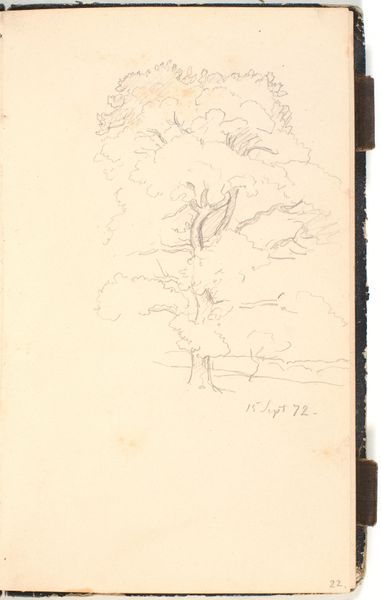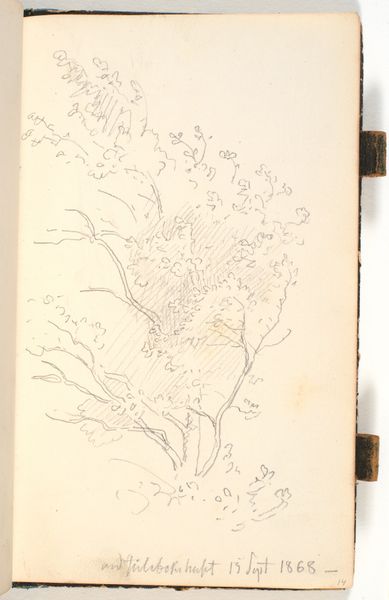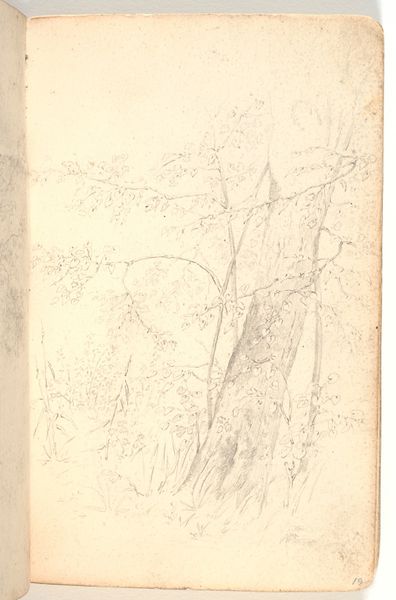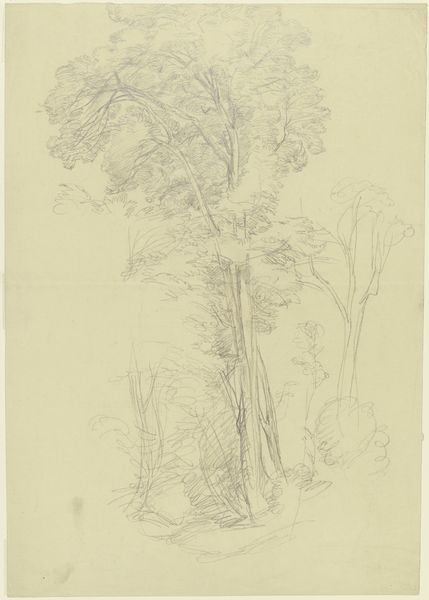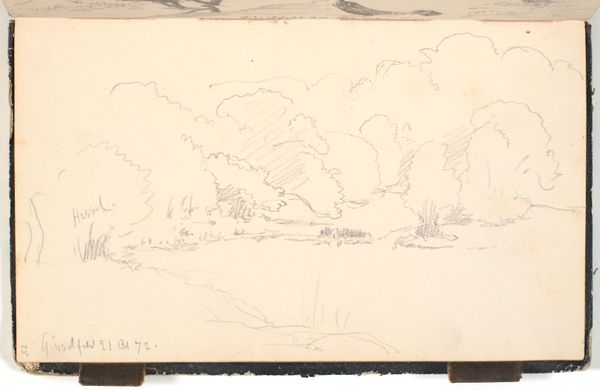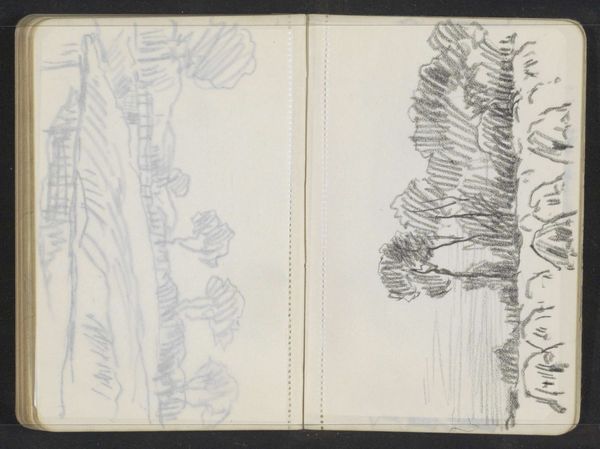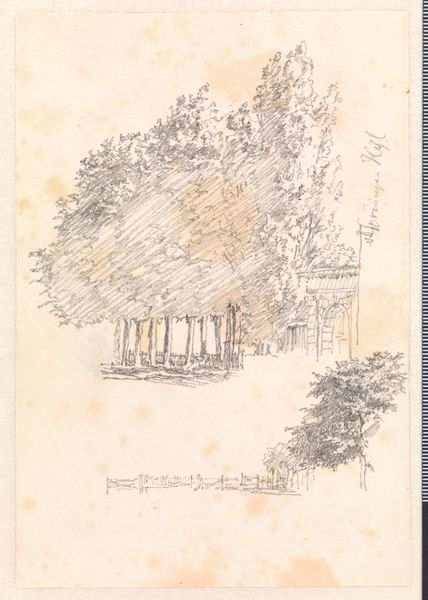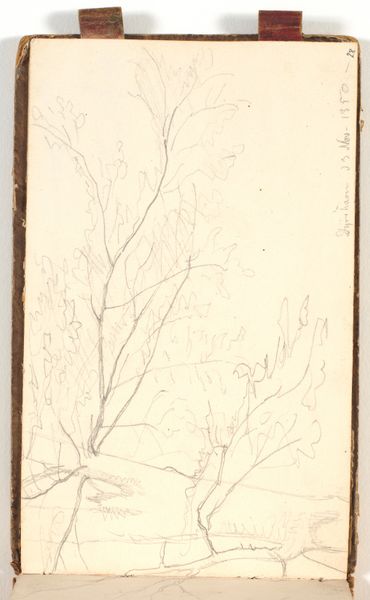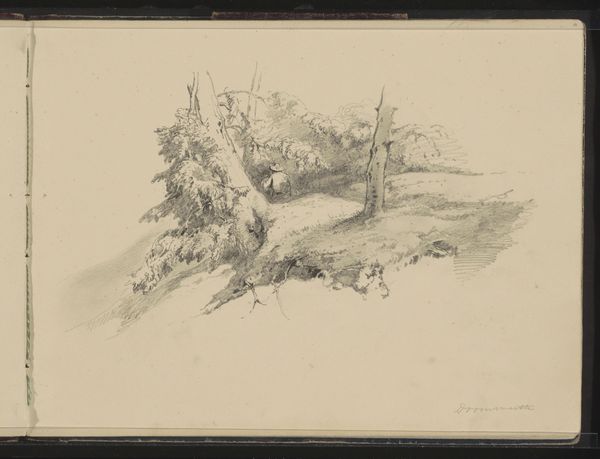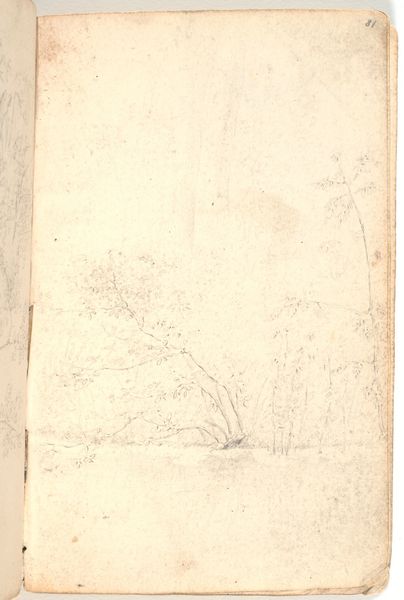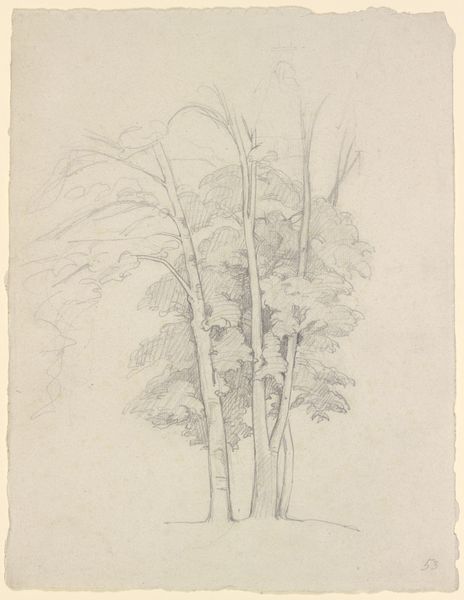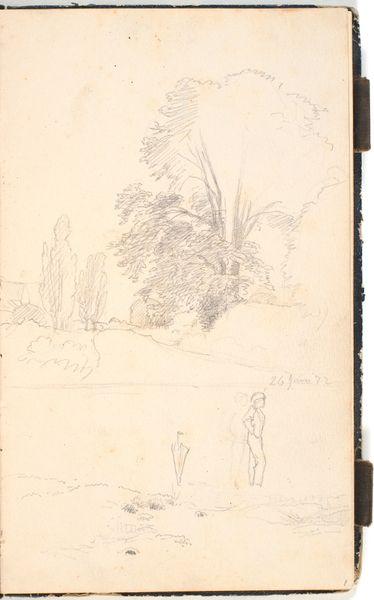
drawing, pencil
#
drawing
#
landscape
#
pencil
#
realism
Dimensions: 215 mm (height) x 130 mm (width) (bladmaal)
Editor: We're looking at "Åparti med høje træer," or "Section with Tall Trees," a pencil drawing by P.C. Skovgaard from 1872. It's housed at the SMK, Statens Museum for Kunst. It feels so ephemeral. What stands out to you in this piece? Curator: The rhythmic structure, predominantly established by the verticality of the trees, immediately draws my attention. Note how Skovgaard uses varied line weights and densities to differentiate between the foreground trees and the recessive background elements, creating a sense of spatial depth even with such a limited tonal range. The formal contrast between the strong verticals and the implied horizontal line of the water suggests a deliberate ordering principle. What do you make of the artist's choices regarding composition? Editor: It’s interesting that you pinpointed those contrasts. I was caught up in the delicacy of the pencil strokes and didn’t fully consider the implied order. The light seems almost to define the shapes instead of shading or dimension. Curator: Precisely! Skovgaard appears primarily concerned with form, eschewing conventional modeling techniques for a system that foregrounds the artwork’s internal logic and semiotic weight. Consider the lines as not just descriptive, but as constructive elements of a self-referential visual language. Notice the strategic placement of darker areas to suggest mass versus empty or fading areas, communicating something ethereal. Editor: I'm beginning to see that. So it's not just a simple landscape study but rather an investigation into the very nature of drawing itself? Curator: Precisely! Editor: That’s quite insightful. I initially saw it as a sketch capturing a fleeting moment. Now, I appreciate Skovgaard's focus on structure and form to emphasize how drawing conveys visual form. Curator: Indeed, by reducing the landscape to its barest components, Skovgaard invites us to examine the fundamental properties of the medium itself and challenges the very foundations of representation.
Comments
No comments
Be the first to comment and join the conversation on the ultimate creative platform.
